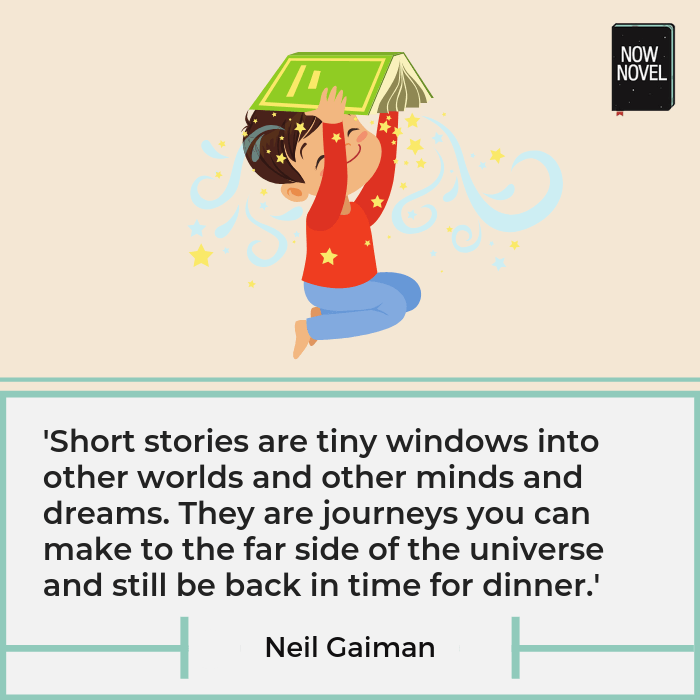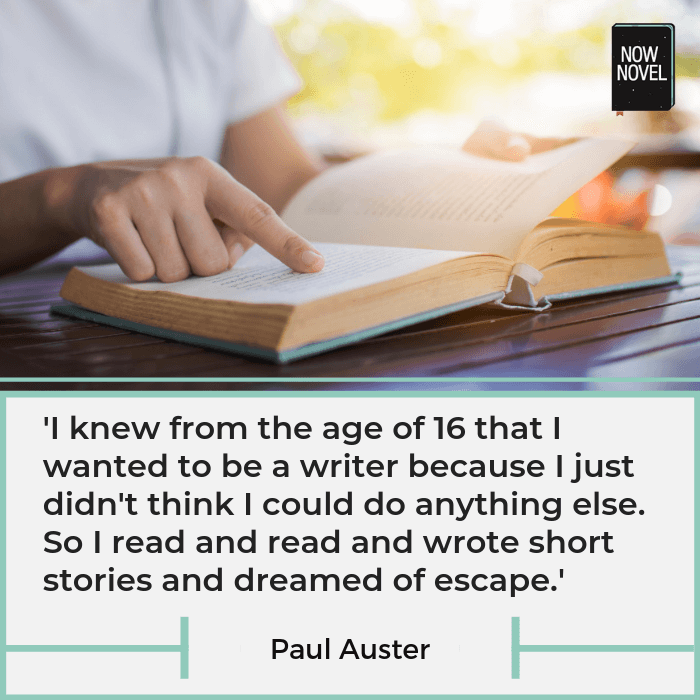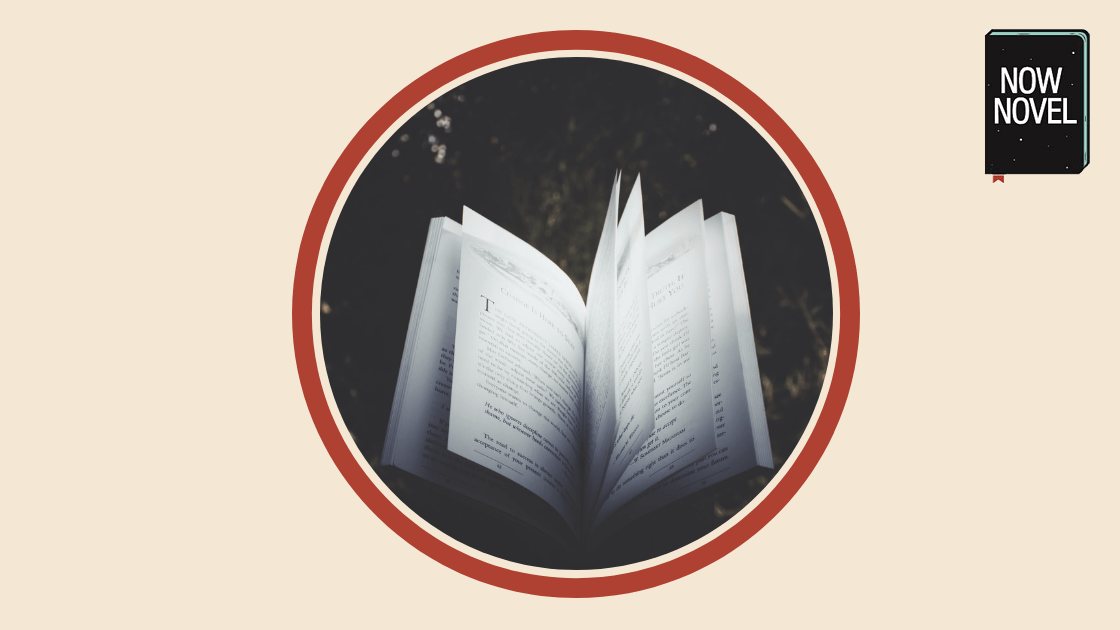If anyone can teach us how to start a short story, it’s authors famed for their skill in writing shorter tales. Read 5 examples of effective short story openings and what they teach us:
1. Learn how to start a short story from Faulkner: Create intrigue
Neil Gaiman wrote:
‘Short stories are tiny windows into other worlds and other minds and dreams. They are journeys you can make to the far side of the universe and still be back in time for dinner.’
To make readers willing to peep through windows into other worlds, to risk being late to dinner, you need to create intrigue.
Consider William Faulkner’s intriguing opening lines to his famous short story ‘A Rose for Emily’:
When Miss Emily Grierson died, our whole town went to her funeral: the men through a sort of respectful affection for a fallen monument, the women mostly out of curiosity to see the inside of her house, which no one save an old man-servant–a combined gardener and cook–had seen in at least ten years.
It was a big, squarish frame house that had once been white […]
Faulkner, ‘A Rose for Emily’, available here
Why is Emily Grierson described as a ‘fallen monument’, we wonder, and why has nobody but the ‘combined gardener and cook’ seen the inside of her house in 10 years?
This opening portrait of an intriguing and mysterious monumental figure in the community immediately rouses curiosity. Because Miss Emily is recently deceased, we also have an inkling more will be revealed about her shortly, and it is.
Create intrigue at the start of your short story by opening a tiny window into a world where there are:
- Monumental or mysterious characters not yet fully revealed
- Changes (e.g. Faulkner’s use of the past perfect tense in ‘a … house that had once been white’)
- Characters who know more than the reader does (for example, Miss Emily’s gardener-meets-cook)
These are only some possible sources of intrigue at the start of a short story.

2. Introduce key elements of place
In a short story, you could start by introducing a curious, mysterious place, as Alice Munro does in her short story ‘Dimensions’:
Doree had to take three buses—one to Kincardine, where she waited for one to London, where she waited again, for the city bus out to the facility. She started the trip on a Sunday at nine in the morning. Because of the waiting times between buses, it took her until about two in the afternoon to travel the hundred-odd miles. All that sitting, either on buses or in the depots, was not a thing she should have minded. Her daily work was not of the sitting-down kind.
Munro, ‘Dimension’, available here.
Note how subtly Munro slips in mysterious reference to ‘the facility’. The balance of our focus is on the humdrum, mundane activity of all the transport Doree has to take to reach it.
It’s only later in the story that we learn exactly what the facility is. Who Doree is visiting there; the nature of her and the person being held in the facility’s relationship.
By keeping what exactly ‘the facility’ is secret to begin with, Munro ropes us into Doree’s story through everday, simple details. This makes a past trauma Munro later reveals all the more unsettling and chilling due to stark contrast.
When you introduce place at the start of your short story, what elements could you hold back to surprise your reader with later? What do they need to know now? What can be used to dramatic effect later?
3. Launch straight into action
Munro’s example shows how to be subtly teasing at the start. Yet you can also take a more action-oriented approach. The Italian author Italo Calvino does this in ‘The adventure of a crook’ (from his collection Difficult Loves).
Calvino begins the story with the crook of the title’s current predicament:
The important thing was not to get himself arrested immediately. Gim flattened himself in the recess of a doorway, the police seemed to run straight past, but then, all at once, he heard their steps come back, turn into the alley. He darted off, in agile leaps.
“Stop or we’ll shoot, Gim!”
Calvino, Difficult Loves, 1983 (trans.), p. 13.
Calvino’s opening is full of suspense and breathless anticipation. We have the action of footsteps, and Gim squashing himself into the door’s recess. Then the sudden flurry of his flight from the police.
If your genre is not crime, there are all kinds of suspenseful actions you could begin with:
- Actions indicating deceit or stealth. For example, a teenager out past curfew sneaking through the window into their bedroom
- Actions suggesting pressure or stakes. For example, an exam student’s desperate sprint for a leaving train to campus
Suspenseful actions that leave readers wondering how the story will pan out make great hooks for first paragraphs.
4. Begin with unusual actions
The suspense in an action at the start of your short story may of course be narrative. The situation itself might not have high stakes at all. Yet ‘narrative tension’ (the tension between what we know so far and don’t yet know) is satisfying in itself.
Take, for example, the start of Vladimir Nabokov’s short story ‘Christmas’:
After walking back from the village to his manor across the dimming snows, Sleptsov sat down in a corner, on a plush-covered chair which he never remembered using before. It was the kind of thing that happens after some great calamity.
Nabokov, Collected Stories, 1965, p. 148.
Here the small action of sitting in a chair one wouldn’t usually use creates questions. Why this unusual action? The next sentence (‘It was the kind of things that happens after some great calamity’) suggests that something momentous has happened to Sletptsov.
The simplest gesture opens Gaiman’s ‘tiny window’ into Sleptsov’s world, and whatever ‘calamity’ has struck.
At the start of a short story involving a significant event, think about unusual actions you could use to hint at and create a pull towards the event.
For example, if the event in question were a wedding, you could describe a member of the couple’s family tying ribbons on a car to be used in the bridal procession.
Small, significant gestures such as these draw us in and create a sense of what is significant about this moment.

5. Start with an interesting idea
Short stories don’t necessarily have to squeeze as much action as possible into the space of a few pages. Sometimes, you might want to simply play with and explore ideas.
Jorge Luis Borges is one of the most famous literary writers to have used the short story more for playful thought experiments than riveting action.
For example, in Borges’ ‘The Library of Babel’, he imagines and describes an infinite library containing books that hold every possible combination of letters. Borges begins:
The universe (which others call the Library) is composed of an indefinite and perhaps infinite number of hexagonal galleries, with vast air shafts between surrounded by very low railings.
Borges, ‘The Library of Babel’ in Labyrinths, p. 78.
This idea, of a library that is also a metaphor for the universe with all its random and coincidental qualities, is extended throughout the story. For example, Borges describes a superstition that once existed that in the library ‘there must exist a book which is the formula and perfect compendium of all the rest‘ (p. 83).
From the seed of an idea – a library that contains infinite combinations of letters, to contain every imaginable arrangement of words and nonsense, Borges teases out further developments of his starting idea.
Thus the change and growth of the story becomes more the development of an idea itself than a specific character.
What Borges’ example teaches us is that working in a smaller form such as the short story gives us freedom to play with ideas, subject matter and form. We can work out complex ideas in a shorter word count. And even experiment with form or subject matter.
Develop the central idea for your story and get constructive feedback from peer critique groups or a writing coach.


2 replies on “How to start a short story: 5 lessons from great writers”
It’s been ages since I’ve written a short story. These 5 tips have been proven to be inspiring for me. Thank you for putting this post in your blog.
Thank you for reading our blog, Glynis. Good luck with your next short story!